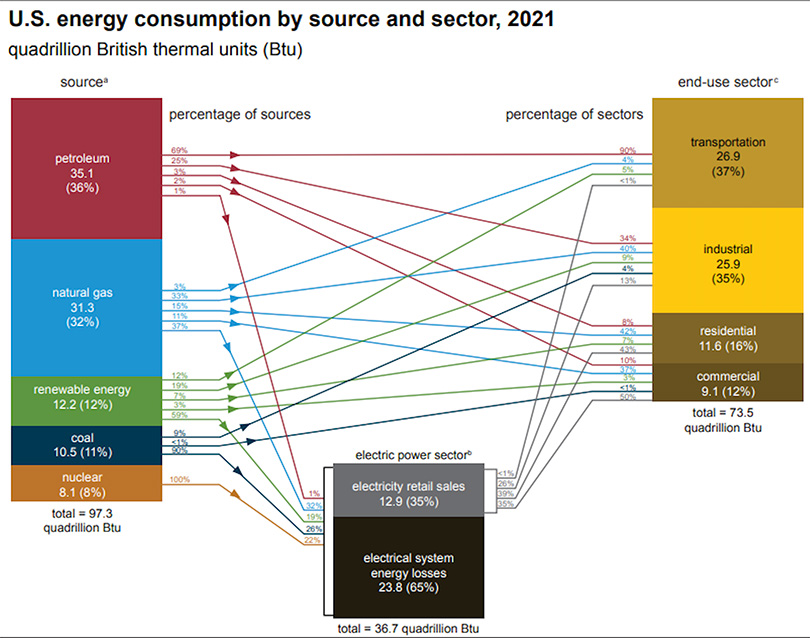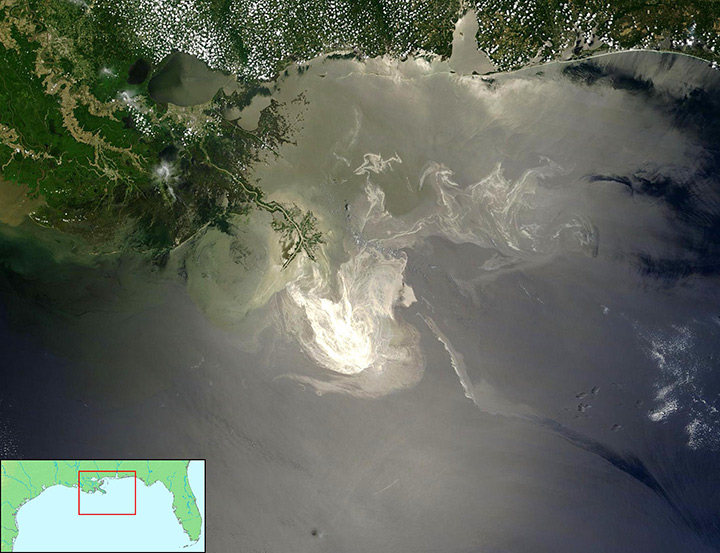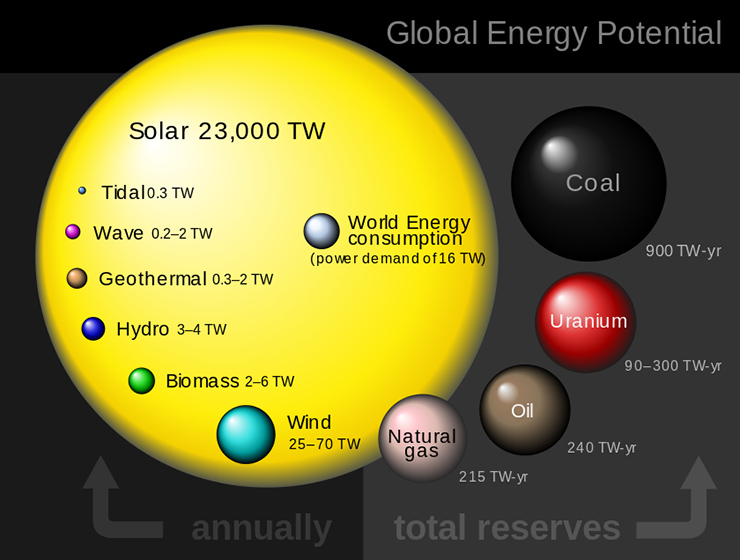Energy Sources & Demand Sectors
Energy Sources must be sustainable to maximize benefits from Interstate High-Speed Rail System. Its not enough to eliminate coal, reduce burning oil, ramp up wind, solar and geothermal energies. To keep our economy thriving, we must also capture more greenhouse gases from natural gas and modernize some existing Nuclear Fission power plants until Nuclear Fusion power plants are ready for prime time. — Thomas Dorsey, Soul Of America
Since more HSR, Regional Rail, Metro Rail, Bus Rapid Transit, and Electric Vehicles will increase electricity demand, it’s insightful to examine Fuel Sources for Energy, Transportation, and Industrial sectors to play the biggest roles in checking Global Warming by 2050.
Trevor Noah’s video interview of Bill Gates on this subject is a good starting point to understand mankind’s great challenge.
America and the rest of the world can no longer gradually transition from coal & oil burning. We must diligently move to Sustainable Energies (wind, solar, geothermal, biomass). When the wind doesn’t blow and the sun doesn’t shine, we need natural gas, nuclear fission, geothermal, and biomass energy. We must also reduce emissions extracting natural gas and replace other old Nuclear Fission Reactors with safer Nextgen Nuclear Fission Reactors.
Since no one wants to see another Fukushima incident, we must decommission Nuclear Fission Reactors located in unsafe zones.

U.S. Energy Consumption by Source & Sector 2021; source U.S. EIA
Though there’s a lot of buzz about Nuclear Fusion lately, don’t expect a Nuclear Fusion power plant to be ready for prime time before 2035. We can, however, accelerate the transition of our Transportation sector from 90% Petroleum to 95% Sustainable Energies by 2050.
Coal, The Biggest Danger
Nothing is more environmentally damaging and toxic than mining and burning coal. Due to its high concentration of carbon dioxide, nitrous oxide, methane, sulphur dioxide, air particulates, volatile organic compounds and mercury emissions, it is better described as “Dirty Coal.”
Dirty Coal consumption by China and America still makes us the world’s two largest contributors to air pollution.
Wind, Solar and Nextgen Nuclear Energy are Near-Zero life-cycle GHG emission sources of scalable energy. Another Renewable Energy, Hydroelectric, is also Near-Zero, but not scalable without severe environmental damage. As sourced from OurWorldInData.org, here’s how Coal, Oil, Natural Gas, and Biofuel compare to Wind energy over a life-cycle of GHG emissions:
• Coal produces 204 times more GHG than Wind
• Oil produces 180 times more GHG than Wind
• Natural Gas produces 123 times more GHG than Wind
• Biofuel produces 20 times more GHG than Wind
Every advanced nation has evaluated technologies for so called “Clean Coal.” Even if Clean Coal Technologies reduced GHG emissions by 40%, as some suggest, Coal would still be a disaster for the environment and Global Warming.
The conclusion of their governments and independent scientists is that the long-term economic and environmental costs of Clean Coal are non-viable compared to Nuclear and Renewable Energy alternatives. Since the 2015 Paris Climate Accord, signatory nations have committed to replace Coal with Renewable Energies by 2050.
In my opinion, America’s energy priority should be to eliminate coal extraction and consumption by 2030-32.
Rising Danger of Risky Oil
“Cheap Oil” is easily accessible oil and close to the surface. America’s Cheap Oil is so depleted that a majority of domestic oil is now extracted from deeper, environmentally-risky places, including from shale miles below large underground water aquifers. If a major accident occurs at the aquifer level, it will be another catastrophe.
That’s why is deep underground and deep underwater oil is better called “Risky Oil.”

BP oil spill catastrophe in the Gulf of Mexico, May 2020
BP’s Risky Oil catastrophe in the Gulf of Mexico was a wake-up call. No one can prove that another catastrophe won’t occur deep underwater or deep underground. Companies and governments can only lower risks associated with Risky Oil via a safety-valve cutover well, vigilant safety operations and rigorous federal safety inspections.
America’s second energy priority should be to eliminate oil burning (not oil lubrication) from the Transportation sector, excluding jets, cargo & cruise ships by 2045. The latter transport modes will need a mix of oil, biomass, and battery energy for some time to come.
Airlines should also pay carbon offsets for their GHG and smog emissions.
The Good, Bad and Ugly of Natural Gas
Some people want you to believe natural gas is a viable energy solution well beyond 2050. Even if Carbon Capture Technologies cut CO2 from Natural Gas by 40%, don’t believe them.
Natural gas requires risky work to extract from underground. After natural gas is extracted from the ground, it is treated to remove hydrogen sulfide, helium, carbon dioxide, hydrocarbons, and moisture to form commercial-grade methane gas for heating & cooking. America has abundant natural gas. A British Thermal Unit (BTU) of energy from natural gas is currently cheaper than a BTU from coal, oil, biofuel, wind, solar and nuclear energy, if you exclude the environmental costs of extracting natural gas.
The environmental costs of natural gas are high because all the easy-to-access natural gas has been extracted. Now companies are pursuing Risky Natural Gas via hydraulic fracturing called “fracking”. Its an industrial process that pumps pressurized sand and toxic chemicals thousands of feet underground then snakes out horizontally to break up miles of shale rock to release vast quantities of natural gas.
The next stage of fracking sucks out natural gas and the toxic chemical-sand residue to the surface. That sludge has to be stored somewhere.
Fracking proponents are correct to claim that well-constructed and well-operated fracking plants are safe. Natural gas fracking also produces many good-paying jobs.
If we don’t reduce the rate of fracking for Risky Natural Gas, we’ll be more dependent on that Fossil Fuel to 2070-75. That’s particularly bad news because all fracking companies do not operate at high environmental standards. Several state governments are partly to blame.
In their rush to create jobs, several states give tax breaks that attract more fracking activity. As a result, wildcat companies joined in the fracking bonanza. From the long history of oil wells, we’ve learned that wildcatters often cut safety corners to maximize profits. Improper well seals letting small gas leaks reach the surface are common. As more wildcatters exploit lax and inconsistent state standards for well seals and backup systems, the probability of accidents causing a big gas leak into aquifers or large surface area increases.
It’s no secret. The oil & natural gas industry prefers less federal fracking regulation. After watching the Gulf of Mexico oil catastrophe that required the federal government to both clean up and fine BP, more people believe we must have tougher federal standards and inspection of this industry to prevent a fracking catastrophe.
For example, one best practice for deep underwater wells is to have a second emergency pipeline that can cut over to limit oil spills. For that reason, some nations require a dual emergency pipeline for wells too deep for divers to reach. The periodic, but rigorous federal inspection would insure that the safety and cut-over procedures work, thereby preventing catastrophes.
Even though fracking closer to the surface has been around for decades, there are gold, silver and bronze standards of operation. Given the risks of Risky Natural Gas and Risky Oil, America needs a better-funded EPA to ensure that all fracking operates at a gold standard. Those who can’t make money operating at the gold standard, need to be shut down.
Fracking has also been linked to earthquakes. Fracking got so out of hand that Oklahoma lawmakers issued a new law to reduce it. That is why I argue that fracking should not be done within a 300-mile radius of a major earthquake fault. In other words, there should be no fracking in fault-riddled California, Oregon and Washington.
Considering that corner-cutting by BP or its contractors triggered the Gulf of Mexico catastrophe and BP got hit with a $30 billion fine, the industry should view federal fracking fees and inspections as a Cost of Doing Business. After all, an underground fracking catastrophe without knowing who caused it could devastate the entire industry.
Nextgen Nuclear Reactors, Partially Scaleable
Due to two meltdowns and a near meltdown at nuclear power plants and the nasty business of where to store spent radioactive fuel rods, I harbored a bias against nuclear energy for decades. The 2011 Fukushima nuclear power plant meltdown caused by tsunami reinforced that bias. But I try to keep an open mind about potential solutions from unconventional places.
By 2010, I questioned my bias based on technology and safety advances of Nextgen Nuclear Plants that are smaller, require less cooling water, prevent meltdowns without human intervention, and reprocess spent radioactive fuel rods from early generation reactors. By 2022, France was producing 75% of its electricity from nuclear energy for these environmental and economic advantages:
• Nuclear energy ties Wind energy for near Zero GHG & Smog emissions
• Allows France to shutdown all coal power plants by 2022
• The French economy loses less money purchasing foreign oil & natural gas
• The French economy imports money by selling excess electricity to neighbors
• France reprocesses uranium from nuclear bombs for nuclear energy

31 Nuclear Power Plants (in white) operating beyond their 40-year License
Despite those advantages to France, my bias against nuclear energy was re-enforced when Japan’s earthquake-tsunami-nuclear plant meltdown occurred in 2011. No man-made protection could enable the coastal Fukushima nuclear plant to withstand a tsunami. But every month since 2012, I’ve been reading about glacier melts, sea level rise, ocean temperature & acidity increases, more powerful hurricanes & tornados, and more animal extinctions. Those are scarier than any Nextgen Nuclear Reactor.
A standard line when talking about Bucket List Items in the travel business is “You better take that Alaskan cruise before all the glaciers melt.” That line should be funny, but isn’t. Americans are witnessing longer hurricanes & tornado seasons, droughts and wildfires. I also recalled the Great USA Flood of 1993 causing the Mississippi River to crest nearly 50 feet high — similar to a 50-year flood.
If we don’t halt Global Warming by 2050, many climatologists forecast that 50-year floods could become 20-year floods by 2050 and 10-year floods by 2060.
These tragic events trigger safety questions about our nuclear power plants. Can all our nuclear power plants withstand a 50-year flood or hurricane? Are they located away from earthquake, tsunami and flood zones?
Precautionary response to these events has led many pro-nuclear nations to recognize that over-dependance on nuclear energy is an invitation to catastrophe. After Fukushima, Japan, France, Germany and Italy plan to dramatically reduce nuclear energy dependence over 2030-40.
Though unknown to most Americans, France also started converting remaining nuclear reactors in safer locations to smaller Nextgen Nuclear Reactors. Those reactors are an order of magnitude safer than current generation nuclear reactors based on 1950-60 designs.
Will America follow their lead?
Hydroelectric Renewable, Not Scalable
Hydroelectric dams produce about 3% of America’s electricity. Our nation has huge concerns about repairing 4,000 deficient dams and restoring ecosystems surrounding them. Repairing old hydroelectric dams will be very expensive.
Due to their collateral damage to local biospheres however, hydroelectricity is not a scaleable energy solution. Building more dams would be trading Global Warming impacts for Damage to the Environment.
Geothermal Energy Renewable, Not Scalable
Unlike Wind and Solar energies, Geothermal energy is always available but limited to local heating or power. For utility-grade electricity generation however, an order of magnitude larger BTU volume is required. Private industry or a utility company would have to drill deeper for Geothermals sufficient to fuel utility-grade electric plants.
As mentioned earlier, deep fracking for oil, natural gas or geothermals can release GHG by accident. Hence, some Geothermal Energy approaches are not scalable. In any event, we’ll need federal & state incentivizes to boost Geothermal Energy to meet up to 10% of our electricity needs by 2050. Ideally, Geothermal’s 10% of electricity generation should displace that percentage from Natural Gas power plants.
Wind & Solar are Scalable Energies
American utility companies are rapidly expanding Wind Turbine generation, but need more tax subsidy for manufacturing volume that will let it unit cost drop below natural gas. At that point market forces will purchase more Wind-powered electricity as the prime replacement for both coal and natural gas-powered electric plants.
Germany, a top-tier country without many hydroelectric dams and fewer sunny days than America, is already meeting 25% of its electricity demand via Wind energy, particularly along coastlines. As it shutters coal and old nuclear power plants, Germany’s trajectory is towards Wind powering 50% of its electricity generation by 2030. But Germany has to worry about converting too many Biofuel plants that burn forest wood and natural gas.
America has a lot more windy coastlines and mountain passes than Germany.
Solar energy has consumer breakthrough promise. Last decade, solar panels only converted about 16% of the sun’s energy into electricity. Recent advances have pushed solar panel efficiency to nearly 23%. This decade, industrial R&D must figure out how to make solar panels last 40 years, like the roof on a modern home. Government incentives should R&D to make solar panels that do not require Rare Earth materials for longevity.
Engineers are making advanced batteries to store excess solar energy on wall-mounted battery storage units. As Cost per Watt of Solar Panels and Advanced Batteries reduce, each year it is becomes affordable to more Americans.
With federal incentives to consumers, Solar energy can reach 12% of our energy generation by 2030 and continue to grow to 20% by 2050. But again we have to carefully choose where to build solar energy plants without further dame to the environment. Along with solar panels on homes and offices, we should consider converting old oil and coal processing plants to solar energy plants.

Global Energy potential favors Solar
Biofuels Partially Scalable
American government and private industries are jointly investing in technologies to speed transition to lower-carbon Biofuel. Unfortunately, not all “Green Energy” is smart investment. Government should not incentivize private industry & bankers to build biofuel factories that burn forest wood or sugar cane.
In Brazil, sugar cane for eating and for ethanol production encourages rainforest destruction. When ethanol is burned, it emits carbon dioxide. That is also mixing ethanol with petroleum in gasoline is NOT a solution to reduce GHG emissions. Some biofuel does make sense, but there are severe limits to its scalability.
In the United States, nearly 1 billion dry tons of biomass can be sustainably collected from corn grain, oil seeds, algae, greases, agricultural residues, wood mill waste, and municipal solid waste streams. Though some sources estimate they can produce 50 billion gallons of biofuel, that’s only confirmed to be enough for Aviation.
Aircraft manufacturers and airlines are investing large amounts of R&D to make commercial planes more fuel-efficient and biofuels into Sustainable Aviation Fuels (SAF). When the life cycle eco-system of SAF is broadly implemented it will significantly reduce carbon dioxide and nitrous oxide emissions from airplanes.
SAF are currently more expensive than jet fuel, and this cost premium is a key barrier to their wider use. Fuel cost is the single largest overhead expense for airlines, accounting for 22% of direct costs on average. We are going to need the Advanced Nations with high air travel co-funding plants that make SAF to make its unit cost competitive with jet fuel by 2030. We need oil companies investing more R&D to reduce SAF cost, while incentivizing the preservation of forests.
America’s vast biomass resources are sufficient to meet projected SAF demand of the U.S. aviation. But we’re going to need more coordinated sustainable bio-fuel and conservation practices for freight rail, freight trucking, cargo ships and cruise ships.
We are some distance away from enough similar standards on sustainable fuels for freight rail, freight trucking, cargo ships and cruise ships by 2030.
Emphasize Sustainable Energy & Smarter Electric Grid
America is racing against the clock to change its energy mix for all demand sectors. President Biden and Congress must first remove the $11 billion/year in federal tax breaks for Natural Gas, Oil and Coal extraction and consumption. Those and more tax breaks should direct to Wind, Solar, Geothermal, Electric Storage Methods and the Electric Grid.
The electric grid is so inefficient, it loses 65% of the energy generation from power plants. Nor is the grid optimized to receive current sell-back from residential solar customers. As a result, unit costs for electricity (Watts) are higher than they should be. Electric passenger trains & rapid transit need lower Watt costs to transport more people by running vehicles more frequently.
As President Obama first requested, America must make big investment in proven technologies to make a Smart Electric Grid. We need $50-60 billion investment in Smart Electric Grid in the next 5 years to start the process. We also need tax credits for Solar Panel installations, Electric Vehicles and Advanced Batteries for home electricity storage units.
As we accelerate Sustainable Energies, build a Smarter Electric Grid, eliminate Coal & Oil as fuel, and better manage Natural Gas extraction & consumption, America, Europe Union, China and Japan will be more influential leading the Paris Climate Accord.
It is critical that our “Best Practice” examples influence India, Brazil, Indonesia, Turkey, Saudi Arabia, Nigeria, South Africa, Egypt, Pakistan, Iran, Indonesia, Thailand, Malaysia, Vietnam, Bangladesh and the Philippines. Collectively, they are forecast to become a larger economy than North America and the European Union combined by 2050.
Lastly, since energy transition is required, we must help coal and oil workers transition to other sustainable jobs.
Return to Interstate High Speed Rail Can Be Green
.
